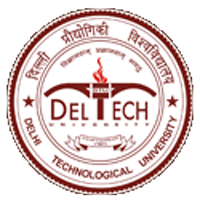Please use this identifier to cite or link to this item:
http://dspace.dtu.ac.in:8080/jspui/handle/repository/22310Full metadata record
| DC Field | Value | Language |
|---|---|---|
| dc.contributor.author | KHUSHI | - |
| dc.date.accessioned | 2025-11-19T06:35:01Z | - |
| dc.date.available | 2025-11-19T06:35:01Z | - |
| dc.date.issued | 2025-11 | - |
| dc.identifier.uri | http://dspace.dtu.ac.in:8080/jspui/handle/repository/22310 | - |
| dc.description.abstract | Introduction The food service industry in India, particularly in urban regions like Delhi NCR, has seen rapid transformation with the rise of cloud kitchens — delivery-only commercial kitchens without dine-in spaces. Driven by rising urbanization, real estate costs, and the growth of online food delivery platforms (e.g., Swiggy, Zomato, Uber Eats), cloud kitchens have emerged as an efficient and scalable business model. The COVID-19 pandemic further accelerated this shift as restaurants pivoted to online operations. This study investigates the factors behind the emergence of cloud kitchens in Delhi NCR, examines their operational models, assesses their sustainability, and identifies challenges and future trends. Objectives ● Analyze the food delivery landscape and consumer behavior in Delhi NCR. ● Identify growth drivers such as technology, funding, and changing consumer habits. ● Examine operational strategies and challenges of cloud kitchens. ● Evaluate customer perceptions of delivery-only brands. ● Recommend strategies for sustainable growth in the cloud kitchen sector. Research Methodology A mixed-methods approach was used: ● Primary Data: Surveys with 108 consumers and 10 cloud kitchen operators. ● Secondary Data: Industry reports (FICCI, KPMG), government publications, journal articles, and aggregator insights. 5 ● Sampling: Convenience and purposive sampling. ● Data Analysis: Quantitative (descriptive statistics) and qualitative thematic analysis. Key Findings Growth Drivers: ● Consumer Preferences: Increasing demand for convenience, variety, and health-conscious meals. ● Technology Adoption: Growth of delivery apps, real-time tracking, digital payments, and AI-driven operations. ● Cost Advantages: Lower real estate and staffing costs compared to traditional restaurants. ● COVID-19 Impact: Surge in demand for contactless food delivery. Operational Models: ● Single-brand and multi-brand kitchens operating independently or through shared facilities (e.g., Swiggy Access, Rebel Foods). ● Heavy reliance on aggregator platforms for customer reach. Customer Behavior: ● Majority prefer food quality, hygiene, speed, and packaging over brand loyalty. ● High influence of online reviews and influencer marketing. ● Younger consumers (18–35 years) dominate food delivery orders. Challenges 6 ● Dependence on Aggregators: High commissions reduce profitability. ● Market Saturation: Fierce competition among cloud kitchens and traditional restaurants. ● Operational Bottlenecks: Delivery delays, food quality inconsistencies, inventory management. ● Regulatory Compliance: Need for FSSAI licensing, hygiene audits, and adherence to environmental norms. ● Customer Retention: Difficulties in building brand loyalty without physical presence. Future Outlook ● Expansion to Tier 2/3 Cities: Untapped markets with rising disposable income. ● Technological Innovations: Use of AI, robotics, cloud POS, and drone deliveries. ● Sustainability Trends: Focus on eco-friendly packaging and waste management. ● Hybrid Models: Combining cloud kitchens with pickup points and pop-up dine-in events.Recommendations ● Own Customer Channels: Build direct-to-consumer models (apps, websites) to reduce aggregator dependency. ● Brand Differentiation: Offer niche cuisines, health-focused menus, and localized offerings. 7 ● Operational Excellence: Invest in kitchen automation, smart inventory systems, and staff training. ● Sustainability Practices: Adopt green packaging and reduce food waste. Conclusion Cloud kitchens in Delhi NCR present a disruptive and promising alternative to traditional foodservice models. While challenges exist, strategic adoption of technology, brand innovation, and sustainable practices can ensure long-term growth and profitability in the delivery-driven future of the food industry. | en_US |
| dc.language.iso | en | en_US |
| dc.relation.ispartofseries | TD-8316; | - |
| dc.subject | CLOUD KITCHEN CONCEPT | en_US |
| dc.subject | RISING DEMAND | en_US |
| dc.subject | FOOD DELIVERY MARKET | en_US |
| dc.subject | COVID-19 IMPACT | en_US |
| dc.title | A STUDY ON THE EMERGENCE OF THE CLOUD KITCHEN CONCEPT TO FULFILL THE RISING DEMAND IN THE FOOD DELIVERY MARKET IN DELHI NCR | en_US |
| dc.type | Thesis | en_US |
| Appears in Collections: | MBA | |
Files in This Item:
| File | Description | Size | Format | |
|---|---|---|---|---|
| Khushi BMBA.pdf | 8.35 MB | Adobe PDF | View/Open | |
| Khushi PLAG..pdf | 8.29 MB | Adobe PDF | View/Open |
Items in DSpace are protected by copyright, with all rights reserved, unless otherwise indicated.



